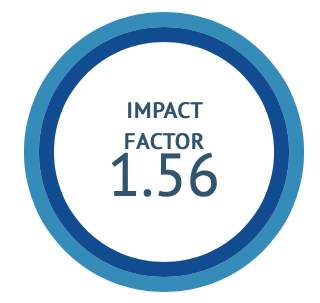Acute toxicity study of hydroalcoholic extract of two Indian medicinal plants Alternanthera ficoidea and Ludwigia octovalvis
DOI:
https://doi.org/10.47552/ijam.v13i4.3145Keywords:
Toxicity, Alternanthera ficoidea, Ludwigia octovalvis, Hydroalcoholic extractAbstract
Background: The ethano-pharmacological survey on two Indian medicinal plants Alternanthera ficoidea and Ludwigia octovalvis revels that both plants are biologically potential and effective in the management of various diseases. Despite the both the plants as whole are used traditionally by the local people in Indian subcontinent but the toxicity studies on whole plant extract of both plant has not explored scientifically. Objective: The toxicity study was designed to explore the toxicity potential associated to hydroalcoholic extract of whole plant of Alternanthera ficoidea and Ludwigia octovalvis according OECD guidelines. Material and methods: Healthy Charles Foster albino female rats of 8-12 weeks’ old were divided in 3 groups. Group I, group II, and group III received vehicle (0.5% CMC, p.o., single dose), hydroalcoholic extract of whole plant of Alternanthera ficoidea (HAF) (Single dose of 2000 mg/kg, given orally), and hydroalcoholic extract of whole plant of Ludwigia octovalvis (HLO) (Single dose of 2000 mg/kg, given orally), respectively. After 14 days, all rats were anesthetized with chloroform and blood were collected by retro-orbital capillary puncture for the study of haematological and biochemical parameters. After blood collection, rats were sacrificed; organs were carefully collected, weighted and examined for changes. Results: The acute toxicity study on Charles foster female rats showed that there was no sign and symptoms of toxicity were seen in rats of all group. Haematological parameters, biochemical parameters and histopathological architectures of various organs of treated groups were found to be non-significant and normal in range when compared with normal control groups. Conclusion: The study found that no mortality occurred at a dosage of 2 g/kg of HAF and HLO, and it came to the conclusion that the IC50 of HAF and HLO was higher than that level.
Downloads
Published
How to Cite
Issue
Section
License
Copyright (c) 2022 International Journal of Ayurvedic Medicine

This work is licensed under a Creative Commons Attribution 4.0 International License.
The author hereby transfers, assigns, or conveys all copyright ownership to the International Journal of Ayurvedic Medicine (IJAM). By this transfer, the article becomes the property of the IJAM and may not be published elsewhere without written permission from the IJAM.
This transfer of copyright also implies transfer of rights for printed, electronic, microfilm, and facsimile publication. No royalty or other monetary compensation will be received for transferring the copyright of the article to the IJAM.
The IJAM, in turn, grants each author the right to republish the article in any book for which he or she is the author or editor, without paying royalties to the IJAM, subject to the express conditions that (a) the author notify IJAM in advance in writing of this republication and (b) a credit line attributes the original publication to IJAM.




